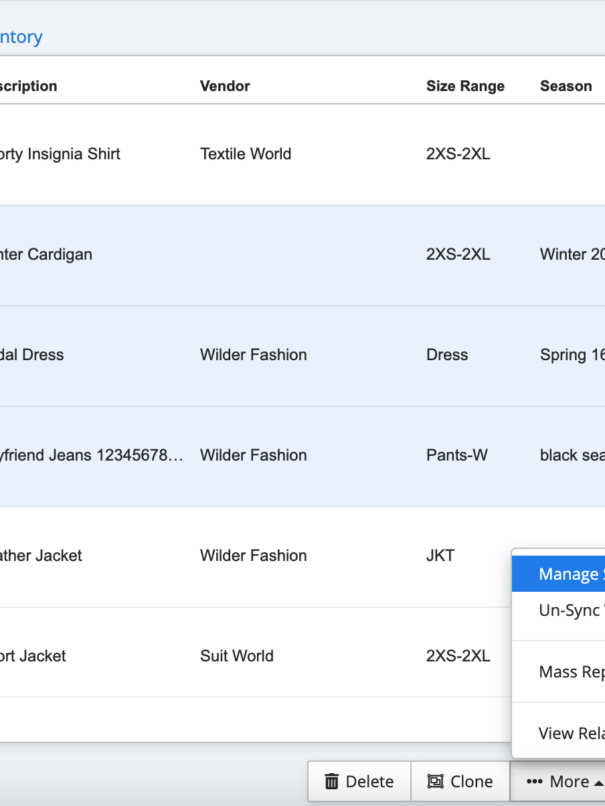Over the last ten years, shopping for clothes has changed a lot. Technology and the way people shop now have pushed old-school physical stores to think outside the box. With online shopping becoming a big deal, stores have had to come up with new ways to keep customers happy, whether they’re shopping in-store or online.
In this blog post, we are going to talk about some cool, successful retail strategies fashion stores can leverage to blend online and offline shopping into one smooth experience.

What Exactly Does the Omnichannel Approach Mean?
The omnichannel approach is a smart way for fashion stores to serve shoppers both online and in-store. This strategy ties different shopping methods together to make buying clothes a smooth ride from start to finish. For example, you can find a shirt you like on a store’s website, try it on at their local store, and even choose to get it delivered to your home. Some stores take it up a notch by helping you order an item online if it’s out of stock in their physical store.
This approach is great for us shoppers as it makes shopping easy and enjoyable, no matter how we choose to shop. Plus, it’s a win for the stores, too, as it keeps customers happy and coming back for more. By blending the online and offline shopping worlds, stores create a hassle-free shopping experience, which is a big deal in keeping up with the modern way of shopping!
Harnessing Modern Retail Dynamics: A Seamless Omnichannel Approach
Staying ahead necessitates a robust retail strategy that encapsulates both the digital and physical realms. As retail companies strive to extend their business online, the necessity for a coherent brand image across all channels becomes paramount. This transition begins with well-conducted market research to understand the target audience’s shopping behavior and preferences, whether they are in-store customers or prefer online shopping.
The heart of modern retail lies in creating a personalized shopping experience. Leveraging customer data allows for tailored marketing strategies, encompassing email marketing, influencer marketing, and referral campaigns, which not only attract new customers but also foster brand loyalty among existing customers. These strategies are executed seamlessly across online and brick-and-mortar stores, ensuring a consistent brand message and customer experience.
Online retailers are now recognizing the value of physical interactions with customers. Initiatives such as pop-up stores or click-and-collect services bridge the digital-physical divide, driving foot traffic to retail spaces and encouraging online shoppers to engage with the brand in person. Similarly, digital advertising and social media campaigns remind customers of the unique in-store experiences awaiting them, encouraging online browsing to translate into in-store purchases.
Furthermore, the retail space is no longer confined to just selling products but extends to offering excellent customer service and creating engaging in-store experiences. Trained sales staff, appealing store layouts, and interactive product displays enhance the shopping experience, encouraging repeat purchases and customer loyalty.
Retail companies also collaborate with other local businesses and brand ambassadors, creating a network that cross-promotes each other, beneficial for both the businesses and the shoppers. This community-centric approach not only drives sales but also positions the brand favorably in the local market.
Lastly, a keen eye on pricing strategy, keeping in mind the competitive landscape and the perceived value of products, is crucial. Regular customer surveys provide insights into pricing acceptance and areas of improvement, ensuring the retail strategy remains customer-centric and market-competitive.
Bridging Digital and Physical Shopping Through Technology
Technology plays a big part in making shopping a breeze, whether you’re browsing online or strolling through a store. One cool way stores are doing this is by letting you buy items online and pick them up in-store. This is often called BOPIS (Buy Online, Pick Up In Store). It’s super handy because you can skip the shipping wait and fees and get your new gear the same day. Some stores even offer curbside pickup, so you don’t have to leave your car!
Also, stores are now using tech to bring online features to their physical locations. For instance, you can use your phone to scan a QR code and get more info about a product, like reviews or other color options. And if an item you want is out of stock, store associates can help you order it online right then and there. They might even have tablets to do this for you. It’s like having the online store at your fingertips, even while you’re in the actual store!
Digital Fun in Shopping
Shopping isn’t just about buying stuff—it can also be a fun activity. Stores are finding creative ways to make shopping exciting both online and offline. For instance, online stores are hosting pop-up shops, which are temporary physical stores where you can touch and try on items before buying. These pop-up shops sometimes have special events, workshops, or exclusive deals that make shopping a cool experience.
Online retail stores are making shopping more interactive with virtual try-ons. You can see how clothes or accessories look on you without leaving your home. And some stores even have virtual showrooms or fashion shows, making online shopping feel like an event. By adding these fun experiences, stores make shopping enjoyable no matter how you choose to do it, blending the digital and physical worlds in a cool way.

How Businesses Can Set Up Omnichannel Service
Integrating Technology with Retail Strategies
For a seamless omnichannel service, integrating technology into retail strategies is fundamental. Online and in-store shopping experiences can be blended through various technological solutions; for example, having a robust online store where customers can check out products online, compare prices, and read reviews before making a purchase. At the same time, in-store technology like QR codes can provide instant access to product information, making the shopping experience enriched and informed.
Establishing a Strong Online Presence
In the digital era, establishing a strong online presence is crucial for any retail business. This includes having an intuitive online retail store, active social media profiles, and engaging digital advertising campaigns targeting the right audience.
Through social media and other online platforms, brands can interact with customers, gather feedback, and promote special deals or events happening in physical stores.
Utilizing ERP Solutions
Enterprise resource planning (ERP) solutions are key in managing various aspects of the retail business seamlessly. They help in integrating various operational facets like inventory management, customer relations, and sales data across multiple channels, be it in a brick-and-mortar store or an online retail platform. With real-time data and analytics, businesses can better understand their customers’ preferences, manage stock efficiently, and make informed decisions to enhance the overall customer experience.
Implementing Personalized Marketing Campaigns
Personalized marketing campaigns can significantly improve customer engagement and brand loyalty. By analyzing customer data, retail businesses can tailor marketing materials and promotions to suit the preferences of different customer segments. Email marketing, influencer marketing, and referral campaigns are some strategies to maintain a personalized connection with customers, encouraging repeat purchases and creating a loyal customer base.
Encouraging Cross-Promotions with Local Businesses
Collaborating with other local businesses for cross-promotions can be beneficial in attracting foot traffic to the physical store and driving online traffic as well. For example, fashion retail stores can collaborate with a local cafe to offer special deals for customers shopping at either place.
This not only enhances the customer base but also fosters a community of local businesses supporting each other.
Enhancing In-Store Customer Service
Excellent customer service in-store is as crucial as online customer support. Sales staff should be well-trained to provide information, assist in finding products, and offer a friendly and helpful shopping experience.
Additionally, ensuring that the physical retail space is inviting, well-organized, and reflects the brand image positively is essential for attracting and retaining customers.
Conduct Market Research
Conducting market research to understand the target customer’s preferences, shopping behaviors, and feedback is vital for refining retail marketing strategies. It helps in identifying areas of improvement, understanding market trends, and aligning the product line to meet customer demands.
Leveraging Social Media for Brand Building and Customer Interaction
Social media platforms are powerful tools for retail businesses to build their brand image, interact with customers, and promote their products both online and in-store. Utilizing platforms like Instagram, Facebook, and Twitter allows businesses to showcase their products, share customer testimonials, and announce special promotions. Additionally, social media can be used to drive engagement through interactive content like polls, contests, and live Q&A sessions, creating a community around the brand.
Creating a Loyalty Program Across All Channels
Implementing a loyalty program that spans both online and offline channels can significantly enhance customer retention and encourage repeat purchases. Ensure that customers can earn and redeem points whether they shop in-store or online. A well-integrated loyalty program not only rewards customers for their loyalty but also provides valuable data on customer preferences and shopping behaviors, which can be leveraged for personalized marketing campaigns.
Developing Mobile Apps for Enhanced Customer Experience
Creating a mobile app can provide a personalized shopping experience for customers. Through an app, customers can shop online, check in-store inventory, receive personalized recommendations, and access special deals. Moreover, a mobile app can also facilitate easier in-store shopping with features like digital receipts, barcode scanning for product information, and in-app customer service.
Conclusion
Setting up an omnichannel service requires a holistic approach that blends digital and successful retail business strategies efficiently which will help your brand reach unimaginable heights. As the retail industry evolves with technology, adopting an omnichannel approach and leveraging the mentioned strategies can significantly enhance customer satisfaction and business growth.
By focusing on delivering a personalized shopping experience across multiple channels, retail businesses can thrive in a competitive market.







